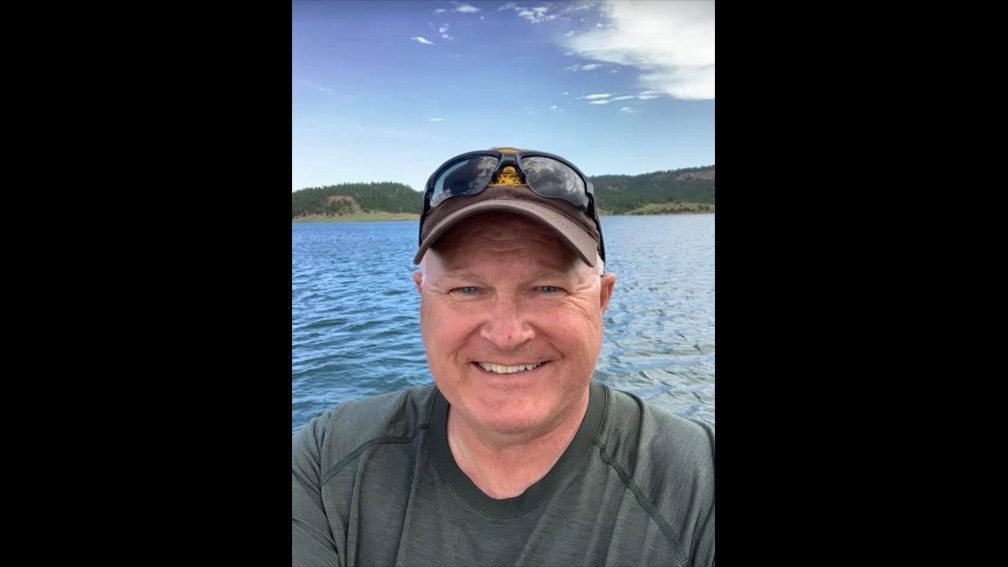Many of you “locals” have been following what’s going on with the Mullen Fire. It’s hard not to when our “sunny Saturday” looks like this?
So, in the span of 48 hours, the Mullen Fire has grown from about 17,000 acres to what our Governor reported this morning as “over 80,000 acres.”
It was at over 25,000 acres yesterday morning and tripled in size in a single day. Just for comparison, the Cameron Peak Fire across the border in Colorado started almost six weeks ago and is at 111,000 acres as of this morning.
The cabin communities of Keystone and Lake Creek have been evacuated and overrun. Structure losses in either have yet to be reported as crews haven’t been able to return yet.
The communities of Foxpark and Albany were evacuated last night. Woods Landing was evacuated earlier today. As of now, everyone between the fire and the Colorado border has been ordered out. Centennial is under a pre-evacuation order.
This is country many of us know fairly well. I’ve fished on Douglas Creek, Rob Roy, and Lake Owen. Hunted Savage Run and Muddy Mountain. Cut Firewood on Centennial Ridge.
Camped at Muddy Creek Dry Park and Lake Creek. I’ve snowmobiled all of these roads in the winter and enjoyed weekend drives across them in the summer. Since 1992.
In those 28 years, I’ve watched this area evolve from a ticking bomb into the nuclear disaster it is today. Roads that were easily passable in a 4×4 pickup in 1995 were like trying to drive up a riverbed last summer.
I’ve had to include my chainsaw as required equipment and have cut my way in as well as cut my way out on account of dead trees that fall across the roads frequently.
It was difficult packing elk quarters out over miles of deadfall timber in 1992 – I’m not sure I could do it today being 28 years older and significantly more deadfall in the way?
I attended a National Interagency Fire Center Conference in 2009 where the Medicine Bow-Routt National Forests were referred by one speaker as “the Dead Forest,” as an estimated seven out of every ten trees were expected to die due to a Rocky Mountain Pune Beetle infestation.
Let’s go back a few more years. In 1978, I did a Forestry project in 4-H on the Rocky Mountain Pine beetle.
While I learned a lot about the beetle itself, I also learned that trees do survive attacks. Given adequate water and nutrients, healthy trees literally “flush” the beetles right out the holes they came in.
That project went to the Colorado State Fair where it was recognized as “Reserve Grand Champion” that year.
How do we achieve healthy trees, though? They grow where they want to, and they often grow so close to other trees that they come into competition with them for the nutrients and water necessary for them to remain healthy.
Just because it’s “a forest” doesn’t mean that if has soil and water conducive to growing an unlimited number of healthy trees. So, unchecked, it grows a whole lot of “unhealthy” trees instead. Such trees become the preferred victim of the Rocky Mountain Pine Beetle.
I can remember “beetle trees” for almost as long as I can remember being in the forests they occurred in from the mid-1970s.
I know we’ve talked about extreme drought since the late 1980s, but the beetles were here before that. Drought became “climate change”. But climate change didn’t bring the beetles either – unhealthy trees did.
I used to watch the big log trucks from San Juan logging run up and down the Piedra Road when I was a kid.
I watched similar trucks from Heggie Logging, Nieman Sawmills, as well as numerous independent operators do the same thing through the 1980s into mills in places like Fox Park, Hulett, and Spearfish. Yes, beetles were present, as was an occasional fire.
Something changed in the 1990s. As a country, we seemed to become more “environmentally conscious.”
The time-proven management processes of logging, grazing, and controlled burning became seen as exploitative and a source of pollution.
In the late 1990s, I became more aware of groups like Biodiversity Conservation Alliance in my hometown of Laramie, whose membership zealously fought every timber sale, every commercial use, even some recreational uses in the courts, using the Equal Access to Justice Act (EAJA) to either bully the Forest Service into capitulating to their demands (“settling out of court”) versus the Forest Service risking having to pay hefty “Environmental Attorney Fees” should the judge rule against the agency.
The Forest Service began putting locked gates across roads I’d used for years or outright “obliterating” them.
I stopped seeing log trucks. Since the logging companies were doing most of the road maintenance, the roads started falling into disrepair.
With no revenue coming in from timber sales, Forest Service campgrounds started to also fall into disrepair and close.
Many of us saw our forest and the agency struggling to care for them in a death spiral. Unmanaged, unchecked forests became overgrown and unhealthy.
Somewhat more alarming, I also began to notice that the apolitical professionals who’d been managing our national forests were retiring or being forced out of the agency, making room for “advocates” who often ingratiated themselves to, if not actively supported, the activist groups that had been suing them.
Here we are today. We need to rip the management of our public lands out of the clutches of the activist groups and activist courts – or at least demonetize litigation as a source of revenue for them.
We need to put that management back into the hands of unbiased, career professionals.
Our Medicine Bow National Forest will never be the same. It will be different. It will be new.
Col. Brian Harmsen (Retired) has appreciated and enjoyed our Wyoming outdoors as a resident of more than 40 years. He is originally from Sundance but has also lived in Laramie and Cheyenne.





